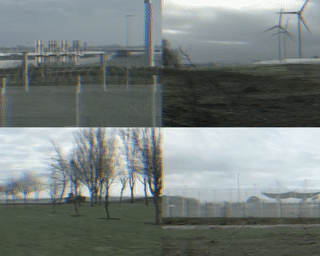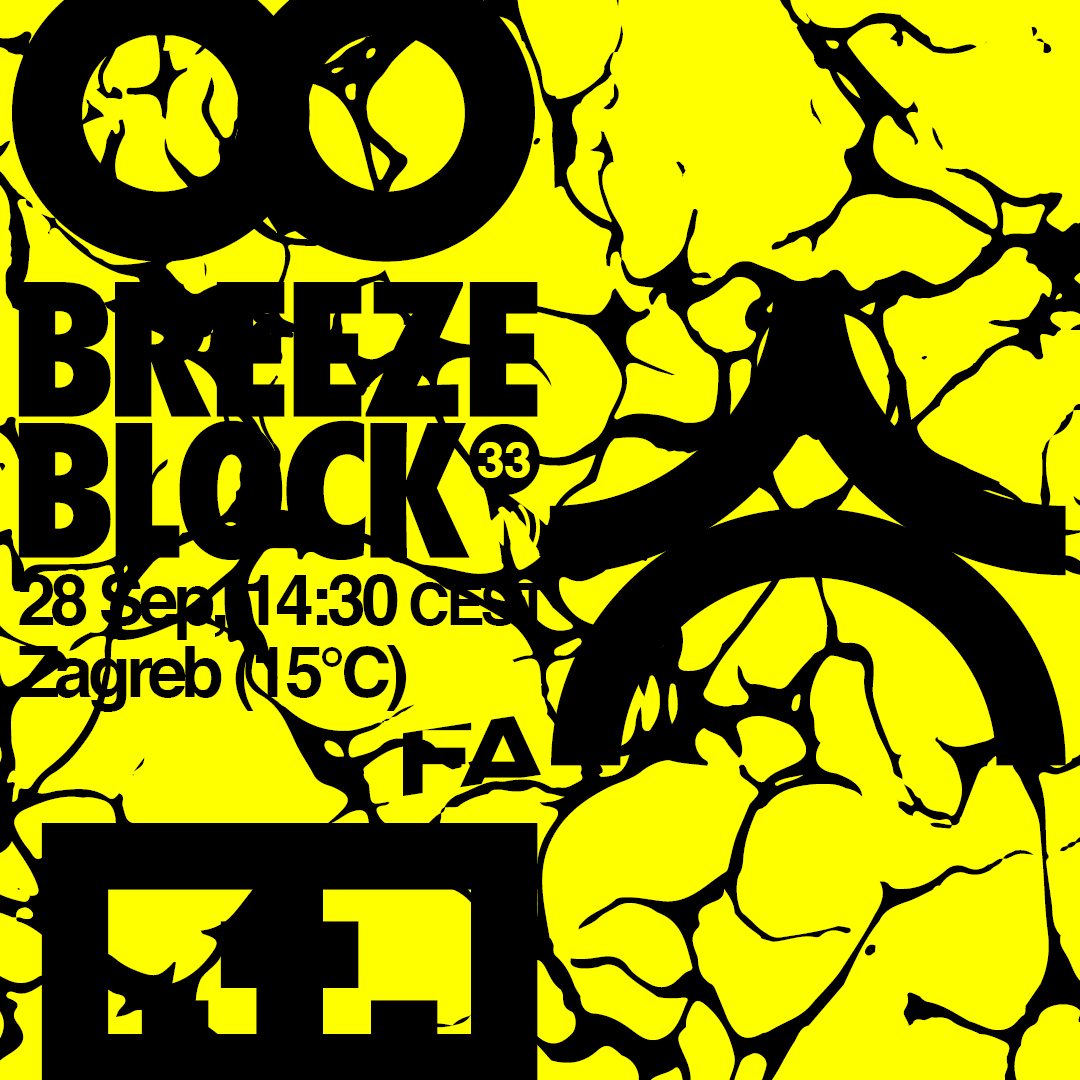Episode Transcript
Speaker 1 00:00:16 Hello, and welcome to BLS. BLS are a short podcast where editors failure, architecture, friends, and guests cause urgent matters in architecture and spatial politics. My name is Maria mat Santi. I am an editor in architecture, Bo architecture, Amsterdam, and today I am with editors, Maria I'm. Thank you for joining me today,
Speaker 2 00:00:39 Maria. How are you? I'm Maria.
Speaker 1 00:00:42 I'm good. Thank you, Maria. I'm feeling quite good about this breeze block today because today we're gonna present any series of breeze blocks that will be developing in the coming month. We haven't done this before in field architecture, so I think it's good to explain that what we will do here is try to delve into one topic in specific, uh, with different guests and other editors and also authors. And, uh, we will be developing a series of short podcasts in English and Spanish and Spanglish as well, where we'll be hosting a series of discussions about discomfort and space. The idea that we will discuss together and with a series of outers guests, how the feelings of discomfort and comfort translate into spatial dynamics as well as how they reveal the boundaries of power dynamics in society. In that sense. I think that, yeah, I think we're just planning to use discomfort as a productive place to rethink contemporary and spatial practices. Just to start with that, I think I will just open the table for a broader conversation with Maria.
Speaker 2 00:01:43 So maybe let us like try to, to see where this idea came from. Right. It appear to actually a bit informed and, um, inspired by the work of ed. Isn't it. Would you guys agree with that or, or am I being unfair with? Okay, so yeah, just how met defines discomfort, uh, as this, uh, experience that takes place for certain bodies, right? Uh, when they do not fit or they do not feel like they can sink in space. So comfort for AME and discomfort for AME are all special, um, body experience. So her philosophy is never this abstract transcendental understanding of, of a concept that is always very concrete. So we're talking about how bodies feel in space. Are you feeling comfy or not? And what are the dynamics that take place when those bodies fit or do not fit in space? Uh, what is interesting for instance, is that for admit, um, just going back to the interests of that you both guys mentioned is that comfort and discomfort are always relational, uh, experiences. So they, they do happen always in relation to someone else or to a group of people. It is not only that you feel or do not feel comfortable or uncomfortable individually and isolated from society, but rather that your comfort for instance, uh, might or could signify actually that someone else is feeling uncomfortable for you to feel comfortable in space. And I think that in a lot of the, the, the discussions that we've had in, in failed architecture or in a few of the articles that have been published, this conversation appears right?
Speaker 3 00:03:37 Yes. I, I was thinking about how usually we take comfort or this feeling of comfort or in comfort for granted. And <inaudible> perspective provides like a, a strong entry point. She gives us a very strong point to, to inquire on how comfort and uncomfort are produced rather than just given. And I think we have that this issue has come up in various articles in the past year in failure architecture. Uh, the most recent one is SA a Covas, uh, piece on tiny houses. And, and it is very interesting how the comfort of public spaces of having a smooth space in which there are no tensions or nor visible tensions are part of this idea of confining, uh, the homeless in, in areas where they're not seen even there's one section in the, or in the piece that she shows that there are, uh, a series of serials or radios in which, uh, there are invisible circles are in Los Angeles where people where homeless people cannot loiter. And, uh, I think that's a, a good example of how comfort is produced at the expense of others. Uh, not being able to use that space, for example, a homeless person who wanted to just rest or in one space is unable to do so.
Speaker 1 00:05:06 I think another good example for, for other content that we have published in the past months, that touches upon the idea of discomfort is some of the work that we did for the protests in Colombia last year, we published an article in Spanish and Los, but also we did a series of situations and other things that touch upon the idea of discomfort and comfort on public space in Bogota with certain bodies that in a way were considered undesirable. And maybe also to, again, connecting to ATA the article that you wrote together about, uh, uh, delivery workers in public space and how it shows a certain ideology in the, of the public space in Bogota with these bodies that were like considered well, they were not considered essential workers, but they were essential workers during the pandemic. So I think that going back to these articles that we have been publishing in field architecture kind of also shows how we've been cooking this idea of comfort and discomfort in space and how we find it as a productive place to start a discussion for future references as well on the production of spatial practices and the production of space.
Speaker 1 00:06:16 I think, uh, definitely the idea of public space like private space is something that is there quite marked, but it's something that we will probably slowly deconstruct in the while we work around these, uh, podcasts, but maybe to open to other topics. I don't know if you would like to add other possible things that we are gonna discuss during this series of breeze books,
Speaker 2 00:06:36 Just to briefly add something and is that it is interesting, I think to, to try to understand. And I think that's part of what we're going to do is try to understand not only what the experience of comfort and discomfort is about, but who are those experience, those experiences. So to say <laugh>, so what type of body is feeling uncomfortable in society and for what reasons, right? That the important part is try to think what are the concrete bodies that are going through the experience of comfort and discomfort. And I think that this brings us precisely to more, maybe more concrete or other type of experiences that we want to discuss. Right.
Speaker 1 00:07:15 I think that of the discussions we'd had until now, I could like kind of, uh, point out two directions. There are probably more, but I'm gonna put them like other two that I see more clear that we will for sure discuss in the coming months through this breeze blocks and this podcast will be recording in the common months. So one is of course, con connected to what you just said, Maria Victoria, and is the idea of these bodies that are like, uh, that feel discomfort or what are the feelings of discomfort and how that kind of traces certain boundaries and power here keeps in different spaces, right. And
Speaker 2 00:07:46 Dynamics of power.
Speaker 1 00:07:47 Yeah, exactly. And, uh, on the other hand, I think that also something we discuss constantly is how the production of comfort in modernity, especially modern architecture. Now, I think we're gonna, I mean, one is completely related to the body, but the other one, even though it's connected to the body is completely related as well to, to the actual production of architecture, you know, like the actual production of infrastructure and architecture in the modern project in general, and is how, like how suddenly the rendering of, of this idea of the city and nature, and like in a way, the production of domestic spaces as this kind of comfortable, safe and familiar spaces also reflected on all the, well, basically it reflected in the environmental collapse that we are living right now, and that this comes also attached to also social injustices and other types of inequalities. But I think those are some of the things that we have been discussing on these ideas of comfort and discomfort, all connected to these, these dualisms between the visible and the visible, the clean and the dirty, that something that is extremely modern in terms of as a, the modern project comes from those like dialectic of positions. And I think it's super related as well to some of the things that we will discuss when it connects to the discomfort of certain bodies in space.
Speaker 2 00:09:06 Also, I guess, as an effort precisely to dissolve that type of bism to, to question, what is the difference between public and private through the concept, through the concept or through the experience of discomfort, what is it that is a good behavior and a bad behavior in public space and for who right. Who, who, who can see it as a bad behavior, why loitering is a bad behavior in space and in which country, and in which context, and how does it appear? I think the question of loing is very interesting in terms of discomfort, but well, we'll come back to that,
Speaker 3 00:09:38 This idea of comfort discomfort. What we find is that it's a very productive way of thinking about how space is shaped and how, and about the politics of space,
Speaker 2 00:09:48 But also how the concept of comfort in any of the different threats of discussions that we, that, that I think we will have, what I think it's in. What I believe it's interesting to notice is how the concept of discomfort becomes a normative concept or something that should be pursued. Right. We need to reach some sort of comfort. I either as an ideal for modernity or as an ideal for in, in terms of AMA the heteronormative society or normative society, how it becomes a sort of norm a horizon, uh, in which we need to, to, to fit all of our behaviors, all of our interactions, so that we can, you know, more or less navigate this fucked up world, we need to fit into the comfort into the cons this concept of, or this norm of comfort. But then what is interesting is, is it possible to think in a PO in something as a politics of discomfort?
Speaker 2 00:10:48 I don't know. I just wanted to open the question. Is it something that we could claim or that we can pursue? Can we do something like seek for discomfort? Doesn't that puts us already in a situation of comfort to say like, oh, you know what, I'm gonna put myself in a position of discomfort that already puts you in a situation of comfort somehow, uh, discomfort then is not something that you can actually seek or do on purpose, but is something that is given to you or put onto you, uh, in society, right? Like uming precisely the margins of comfort while not fitting in those dynamics of comfort.
Speaker 3 00:11:32 No. Yeah. I, I think in that sense, it's, it's as important to inquire on comfort and how comfort is produced as much as inquiring about how this <affirmative>, how discomfort works and how we can feel discomfort and how this discomfort might not be as, as uncomfortable a as some, uh, bodies are put on in a much more frequent way.
Speaker 2 00:11:55 The question on how so double question, how is it that we produce or that we seek to produce, or that we aim to produce comfort. And then what are the experiences of discomfort that come out from that demand of comfort
Speaker 3 00:12:13 From that? Exactly. And why norm
Speaker 1 00:12:15 You try that norm? What
Speaker 3 00:12:16 What's so uncomfortable about being uncomfortable <laugh> that that may moves us to, to achieve, uh, comfort.
Speaker 1 00:12:25 Well, Juan Maria, I think this was interesting and productive way. Open vision thing. I'm a productive way envision what will happen in the coming months with this new series of bridge blocks that we are planning. I also think it was, uh, approved that we need to, uh, in the future and thank you to alert listeners. Please pay attention to the following bridge blocks on the topics of comfort and discomfort that will be developing to us on social media and subscribe to our newsletter. So you aware what Wes new.


